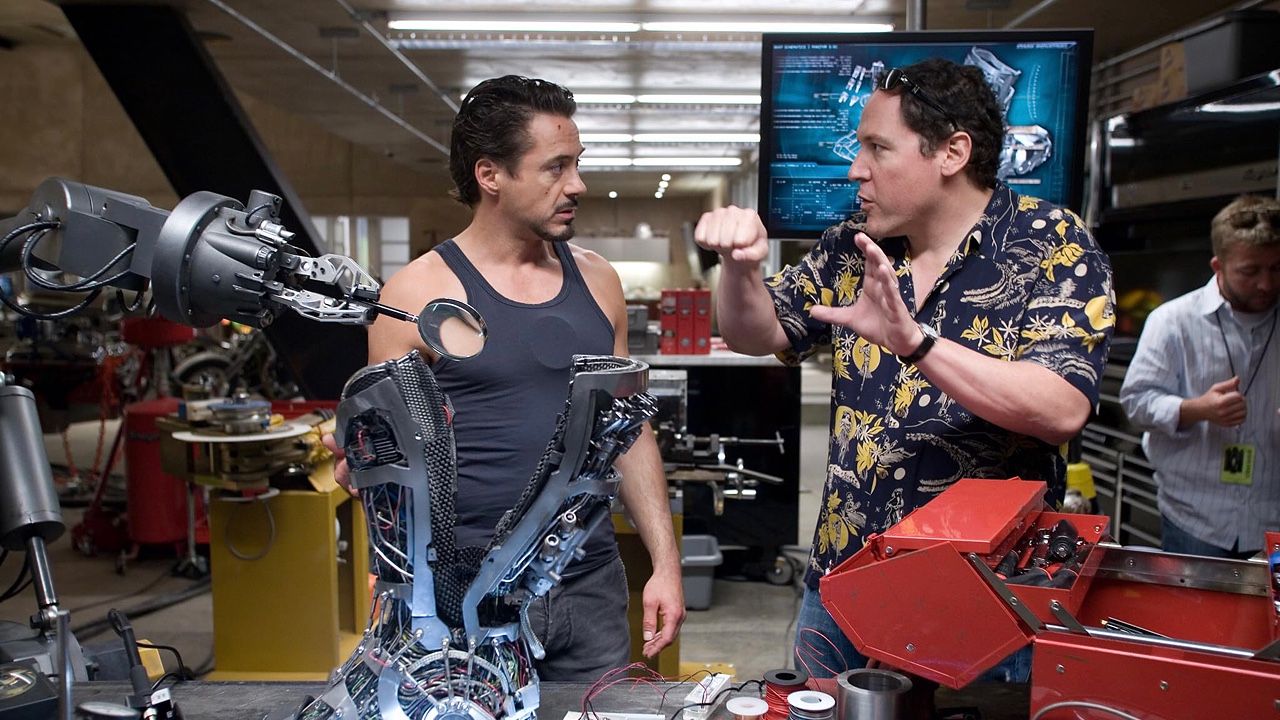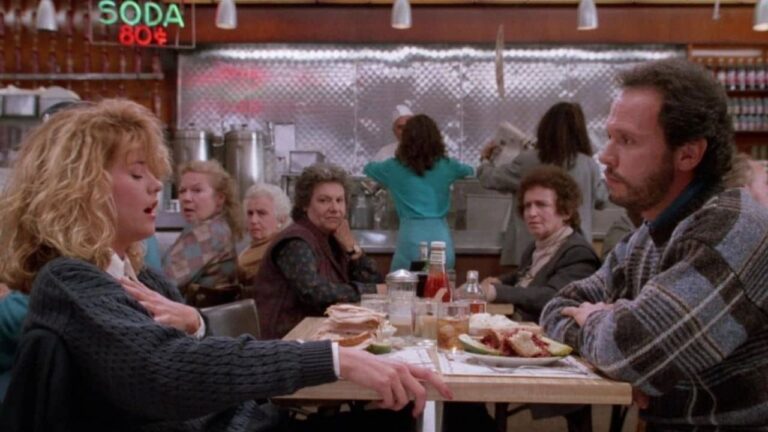15 Best Actors Turned Directors to Storm Hollywood

In recent years, Hollywood has seen a surge of actors moving behind the camera as the wall between acting and directing continues to crumble.
For many actors, the switch to directing is a means to take control of their careers in a rapidly shifting industry. Yet a select group of actors has proved exceptional behind the camera, helming critical and commercial smashes.
Below, find a collection of the best multi-hyphenate actors turned directors who have yielded some of the biggest hits in the industry.
Ben Affleck

After coasting on his Oscar-winning success for Good Will Hunting, Ben Affleck saw his acting career crash and burn with a string of forgettable flops. Remember Reindeer Games or Paycheck? This and a highly publicized breakup with then-girlfriend Jennifer Lopez during the production of Gigli resulted in the worst movie of either actor’s career.
In a move to control his spiraling career, Affleck moved behind the camera, directing the acclaimed detective drama Gone Baby Gone. But his sophomore effort, The Town, a bank heist actioner, made critics notice Affleck’s strong directing chops. The film garnered strong notices and favorable comparisons to Michael Mann’s Heat with its immersive action sequences.
A few years later, Affleck found Oscar glory with Best Picture winner Argo. While the Academy snubbed Affleck in the directing category, the film earned the best reviews of his career. The tense political thriller finds Affleck playing a CIA agent trying to rescue six Americans in Iran during the 1979 U.S. Hostage crisis. The film capped a trilogy of Affleck-directed films, proving his skill with lensing critical and commercial hits.
He even got the girl in the end, finally marrying J-Lo 20 years after their tabloid-frenzied courtship.
Sylvester Stallone

Is there not another actor more closely aligned with one of their screen characters than Sylvester Stallone?
Stallone rose to fame playing the Italian stallion boxing champ in the popular Rocky franchise, a series that continues today. The multi-hyphenate actor took over writing and directing duties with Rocky II, guiding the franchise throughout the decades, injecting each installment with a muscular aspiration tone.
Stallone took a brief detour helming the infamous Saturday Night Fever sequel Staying Alive with John Travolta. But don’t hold that against him, as he also gave us his other popular screen avatar, Rambo.
Currently, Stallone is helming the idiotic but entertaining The Expendables series, resurrecting many aging action stars’ careers. Stallone may not have the flash of an auteur, but he knows how to do action and fills The Expendables franchise with over-the-top spectacles that would make Michael Bay proud.
Penny Marshall

During the 1970s, Penny Marshall built a TV career as a quirky character actor, most notably as Cindy Williams’s free-spirited sidekick on the classic sitcom Laverne & Shirley. After that show ended, Marshall took a stab at directing the (better than it gets credit for) 1986 Whoopi Goldberg vehicle Jumping Jack Flash. Two years later, Marshall showed a whimsical flair with the 80s classic Big, with Tom Hanks in one of his most famous roles.
Marshall continued to grow as a director and flirted with Oscar glory with the award-winning drama Awakenings, featuring Robert De Niro and Robin Williams in against-type performances. That film led to her most famous directing effort, the baseball comedy A League of Their Own, starring an all-star ensemble that includes Hanks, Geena Davis, Madonna, Rosie O’Donnell, Lori Petty, and David Strathairn. The film has Marshall’s charm and wit on full display and became an instant classic, including the famous line delivered by Hanks, “There is no crying in baseball!”
Kevin Costner

After becoming one of Hollywood’s most reliable leading men in the 1980s, Kevin Costner hit the directing debut bullseye with Dances with Wolves. Costner filmed his magnum opus like a classic John Ford western while inverting the genre. The 1990 film won seven Academy Awards, including Oscars for Best Director and Best Picture (a controversial win over Martin Scorsese’s Goodfellas).
Sadly, Costner’s sophomore directorial outing, the post-apocalyptic actioner The Postman, crashed and burned at the box office. The film has aged well since its 1997 release but remains strange and thematically inert. Even his third turn behind the camera, the 2003 Western Open Range co-starring Annette Bening failed to live up to the promise that he showed in Dances with Wolves.
Costner has another epic in post-production, the two-part Horizon: An American Story, where he will again star and flex his directing muscles.
Greta Gerwig

While Greta Gerwig shot to fame writing and directing the smash summer hit Barbie, the multi-hyphenate talent started as a character actress. Most of her acting work flew under the radar in films like Frances Ha and Mistress America, becoming indie darlings.
Gerwig became one of the most lauded actors turned directors with the critically acclaimed and self-autobiographical Lady Bird, earning an Oscar nomination for Best Director. She showed off even more impressive directing chops with the 2019 adaption of Little Women, bringing a deconstructionist lens that recontextualizes Louisa May Alcott’s classic novel.
But the third time was the charm when she brought the long-gestating feature adaption of the classic Barbie doll to life. It’s a daunting task to build a film around a toy property without it turning into a marketing gimmick. Still, Gerwig crafted a sweet tale of “stereotypical” Barbie venturing into the real world, touching on themes of feminism, the patriarchy, and an analysis of the female experience in general.
Warren Beatty

Warren Beatty shot to superstardom, co-starring with Faye Dunaway in the trend-setting crime epic Bonnie & Clyde. Beatty parlayed his heartthrob status into directing with Heaven Can Wait in 1978, becoming one of the first actors turned directors of the new Hollywood generation. The screwball comedy became a critically acclaimed hit, with Beatty earning a Best Director nomination at the Oscars.
But Beatty’s second directorial effort, 1981’s Reds, would become his magnum opus, winning him the Oscar for Best Director. The massive 3-hour picture, co-starring Diane Keaton and Jack Nicholson, chronicles an American journalist covering the Russian Bolshevik revolution who becomes radicalized by communism and returns to the States as a revolutionary for left-wing politics.
Barbra Streisand

In 1983, Barbra Streisand proved herself more than just a triple threat when she directed the religious drama Yentl. The movie features Streisand playing a Jewish girl who disguises herself as a boy so she can enter religious training. The piece was billed as a “film with music,” with Streisand singing several ballads as inner monologues throughout the story.
But Streisand showed genuine directing chops with her second effort, the beautifully lensed Prince of Tides in 1991. Nick Nolte headlines the drama about a troubled man who must revisit his abusive childhood as he talks to his suicidal sister’s psychiatrist.
The film earned seven Oscar nominations, including Best Picture and an Actor nod for Nolte, yet Streisand was notoriously snubbed for Best Director. Billy Crystal, who hosted that year’s Oscars ceremony, said it best during his opening monologue: “Seven nominations on the shelf, did this film direct itself?”
Jon Favreau

Jon Favreau made quite the splash when he wrote and starred in the 90’s cult hit Swingers. Soon after, he segued into directing the modern Christmas classic Elf and the kid’s fantasy Zathura: A Space Adventure.
But Favreau became the architect of the Marvel Cinematic Universe when he directed the blockbuster Iron Man starring Robert Downey Jr. Even to this day, much of the MCU’s DNA can be traced to skillfully directed superhero epic, and he would direct the Iron Man sequel a few years later.
Favreau continues to play in the Disney sandbox by helming the live-action adaptations of The Jungle Book and The Lion King. Currently, the actor/director has been producing the fan-favorite Star Wars series The Mandalorian and will direct its big-picture incarnation, The Mandalorian & Grogu.
George Clooney

The breakout star of the hit TV show ER crafted an impressive movie career thanks to his work behind the camera. Clooney made his filmmaking debut directing the offbeat Confessions of a Dangerous Mind starring Sam Rockwell and Drew Barrymore.
Clooney went from quirky to dramatic with his follow-up feature Good Night and Good Luck, a bold black-and-white retelling of broadcast journalist Edward R Murrow’s attempt to bring down the communist witch hunts of Senator Joseph McCarthy. Clooney returned to the political realm for his fourth project, The Ides of March, starring Ryan Gosling as an idealistic staffer for a presidential candidate who gets a crash course in the art of dirty politics.
Sadly, those three films proved to be the apex of his directing career as many of his follow-ups, like The Midnight Sky and The Tender Bar, failed to make a splash. His most recent film, The Boys in the Boat, received mediocre reviews and tepid box office returns.
Jordan Peele

Who would have believed that Jordan Peele, one-half of the popular sketch comedy show Key & Peele, would launch an impressive filmmaking career? Peele made his debut with the groundbreaking Get Out, a horror film laced with powerful racial commentary that won the Oscar for Best Original Screenplay.
Peele would continue his hot streak of writing/directing horror thrillers filled with social themes like the Twilight Zone inspired Us and the sci-fi mystery Nope. The director has carved out a distinct filmmaking style filled with sly humor and complex characters, making him a standout in this generation’s new directors.
Robert Redford

In the 1970s, Robert Redford quickly became one of the hottest leading men in Hollywood thanks to his blonde, All-American good looks. The prolific actor proved he was more than just a pretty face by starring in such acclaimed films like The Way We Were, All the President’s Men and his collaborations with Paul Newman in Butch Cassidy and the Sundance Kid and The Sting.
In 1980, Redford made his directorial debut with the dark family drama Ordinary People, which starred Donald Sutherland, Timothy Hutton, and Mary Tyler Moore (in a rare dramatic turn). The film became an Academy Award darling, netting Oscars for Best Picture, Supporting Actor, and Best Directing. Redford would go on to direct many more Award-winning films like Quiz Show, A River Runs Through It, and The Horse Whisperer, proving himself more than a one-hit wonder.
Bradley Cooper

Bradley Cooper went from heartthrob to behind-the-scenes auteur by directing the fourth version of the classic A Star Is Born. Such a well-worn story would be detrimental for any director, much less one to make his feature film debut, as Cooper would follow in the footsteps of William Wellman and George Cukor.
But Cooper’s Star manages to avoid the inherent melodrama of the previous adaptions, crafting a grounded and moving tale of two musicians moving in different directions. The film also served the dual purpose of launching Cooper’s directing career and Lady Gaga as a film actress.
Last year, Cooper released the Oscar-nominated Maestro, a biopic chronicling the love affair between Leonard Bernstein and actress Felicia Montealegre Cohn Bernstein. The visually dazzling Netflix production that switches between color and black & white shows that Cooper has a long directing career ahead of him.
Ron Howard

For those growing up in the 1960s and the 1970s, child actor Ron Howard became a constant fixture thanks to his roles on the TV series The Andy Griffith Show and Happy Days. After appearing in George Lucas’s seminal American Graffiti, Howard made his feature directorial debut with the comedy smash Night Shift starring Michael Keaton and Henry Winkler.
Howard would become a prolific helmer of hi-concept comedies like Splash to big blockbuster fare like Willow, reteaming him with Lucas. He famously took over directing duties for the infamous Star Wars spin-off Solo, replacing fired directing duo Phil Lord and Chris Miller to disastrous results.
Howard’s directing style leans into a grounded tone, eschewing the sizzle of more visual directors like David Fincher. This style perfectly fit his most acclaimed film, A Beautiful Mind, the controversial biopic of genius mathematician John Forbes Nash, Jr. The picture finally netted him the Best Director Oscar, rewarding his long and prolific career.
Charlie Chaplin

One of the first ever actors/directors was the little tramp himself, Charlie Chaplin. The English newcomer switched to directing after becoming frustrated by the fluffy comedic fare he was producing at the Mack Sennet Studios (known for their Keystone Cops shorts).
In 1914, Chaplin directed his first short, Caught in the Rain, launching an influential career that would shape film comedy for the next century. For the next two decades, Chaplin released a string of silent films that combined sweet, sentimental storylines with screwball antics and political undercurrents.
Chaplin stayed within the confines of silent cinema even after the industry switched to talkies in the 1930s. Since Chaplin played his iconic “little tramp” persona in most of his features, the director knew once the tramp started speaking, the character’s charm would be shattered. Chaplin had an intense perfectionism, and that comedic precision paid off in such classics as City Lights, The Gold Rush, and Modern Times that still entertain nearly a century later.
Jodie Foster

Jodie Foster joins Ron Howard as another child actor who found a second life behind the camera. After becoming one of Hollywood’s most talented actors, Foster started her directing career by helming episodes of the popular TV series Tales from the Darkside. Then, in 1991, Foster made her feature directorial debut, Little Man Tate, chronicling the struggle of a single mother raising a gifted child prodigy.
In 1995, Foster directed her most famous film, the Thanksgiving classic Home for the Holidays, starring Holly Hunter and Robert Downey Jr. Home for the Holidays showcases Foster’s unique gifts behind the camera, trusting the actors to lead the film while filling the frame with quirky, biting humor. Foster would go on to direct Mel Gibson in the bizarre romance The Beaver and then into action territory with Money Monster, starring Julia Roberts and George Clooney.
Recently, Foster found more success working in TV, directing episodes of the inaugural Netflix series House of Cards. She found Emmy love when she received a Best Directing nomination for her work on the prison dramedy Orange is the New Black.
In 2017, Foster became the first woman to direct an episode of the creepy Netflix anthology series Black Mirror, marking a full circle back to her Tale from the Darkside beginnings as a successful filmmaker.





